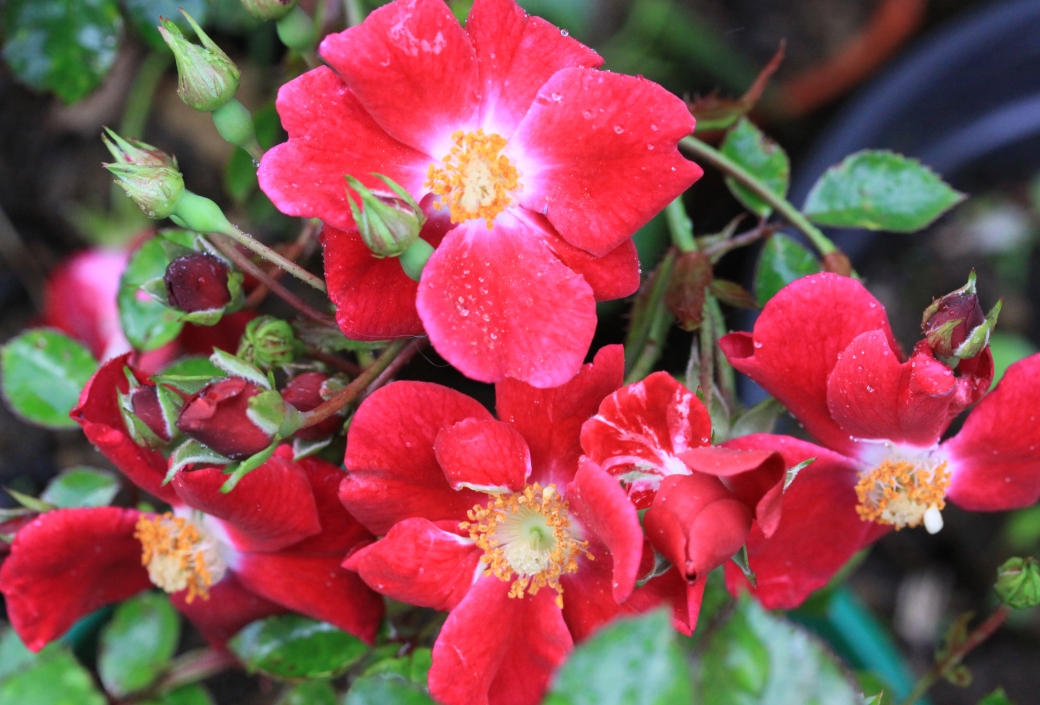
Red Velvet Carpet Rose: Photo by Salila Bryant
The rose family (Rosaceae), in the order Rosales, is a large plant family containing more than 100 genera and 4,828 known species of trees, shrubs, and herbs. Although species of this family have found everywhere except in Antarctica, the most species diversity of Rosaceae family is found in the Northern Hemisphere, particularly in Europe, Asia, and North America.
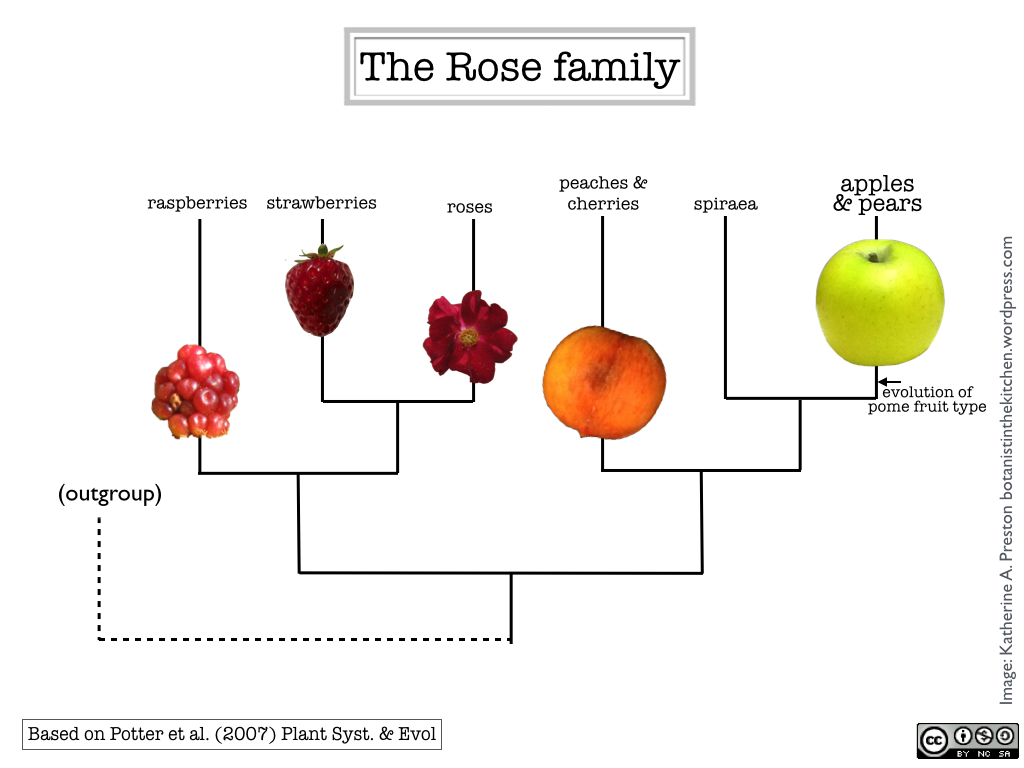
Several economically important species come from the Rosaceae family. Do you know, edible fruits such as apples, pears, quinces, apricots, plums, cherries, peaches, raspberries, loquats, blackberries, strawberries, and almonds also belong to the rose family?
In the early 1900s, botanists reclassified the Spirea, Plum, and Apple families as subfamilies within the Rose family. In response to the reclassification, American poet, Robert Frost penned the following poem;
“The rose is a rose and was always a rose.
But the theory now goes that the apple’s a rose,
and the pear is, and so’s the plum, I suppose.
The dear [Lord] only knows what will next prove a rose.
You, of course, are a rose –
but were always a rose.”
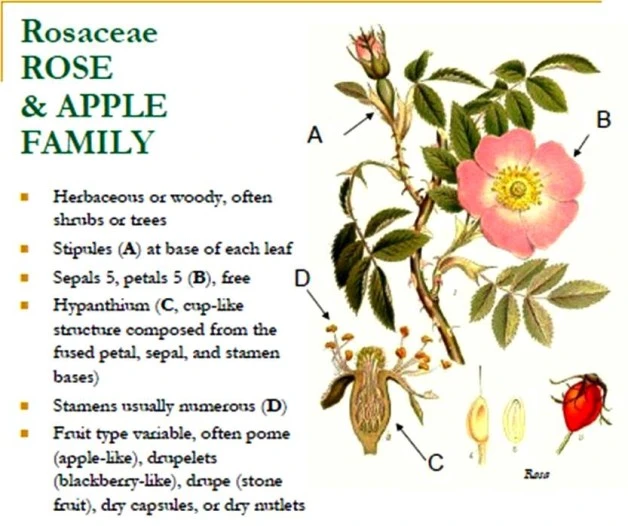
Image credit: Lena Struwe
Members of the Rosaceae family are generally woody plants, mostly shrubs or small to medium-sized trees. Spines, thorns, or prickles on branches are common as well as on the midrib of leaflets to discourage herbivores. However, herbaceous species such as apples and pears typically lack spines or prickles.
Leaves
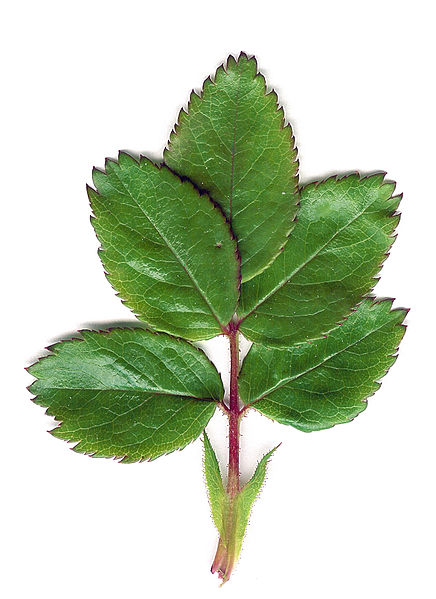
Young Rose Leaf (Photo credit: Rabe (2005), Wikipedia)
Most of the woody shrubs and herbs of this family have compound leaves which are composed of three to 11 leaflets. The leaves or leaflets are frequently more or less oval-shaped with serrated margins. They have a pair of stipules; a small leaf-like structure where the leaf stalk joins the stem.
Flowers
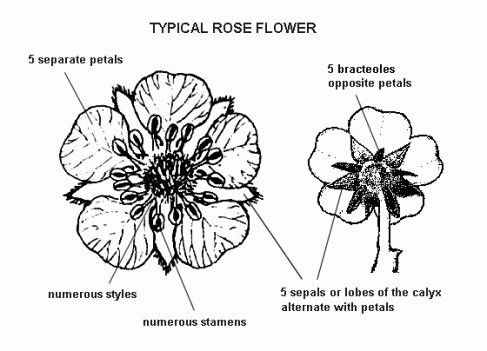
The basic structure of flowers in the Rosaceae family is relatively primitive. They are symmetrical, flat or shallowly cup-shaped and vary in size from small to large. The flowers generally have five sepals, five petals and have numerous stamens. They are almost always bisexual, with both male (stamens) and female (carpels) parts present in the same flower. The colours range from white to various shades of yellow, pink, orange, lavender, or red. The flowers produce nectar and are pollinated by a variety of insects.
Fruits
Most species of the rose family bear fleshy fruits mostly red, orange and yellow in colour. Although they are an important source of nutrition for animals, from the evolutionary perspective; they are designed to attract animals to eat the fruits to discard. Animals act as agents of dispersal of enclosed seeds that are then discarded or ingested.
Rosaceae family is traditionally divided into six subfamilies: Rosoideae, Dryadoideae, Lyonothamnoideae, Spireoideae, Amygdaloideae, and Maloideae. Roses belong to sub-family Rosoideae. Plants of Rosoideae subfamily have dry fruits that do not open.
Many ornamental plants widely cultivated in temperate regions belong to the Rosaceae family. None of those plants, however, is more widespread or appreciated than roses (genus Rosa), which have long been one of the most favoruite flowers of many cultures.
References:
Sytsma, K. J. (n.d.) Rosaceae: Plant family, In Encyclopaedia Britannica. Accessed from https://www.britannica.com/plant/Rosales/Economic-and-ecological-importance#ref1009940
Wikipedia (n.d.) Rosaceae. Accessed from https://en.wikipedia.org/wiki/Rosaceae